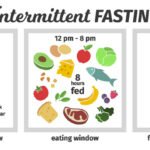A balanced diet is the foundation of good health, energy, and sustainable weight management. But with so much conflicting nutrition advice, how do you design a simple, flexible, and effective eating plan?
This guide breaks down how to build a balanced diet that fits your lifestyle—without restrictive rules or fad diets.

What Is a Balanced Diet?
A balanced diet provides all essential nutrients in the right proportions, including:
✔ Macronutrients (carbs, proteins, fats)
✔ Micronutrients (vitamins, minerals)
✔ Fiber & hydration
It’s not about perfection—it’s about consistency and making better choices most of the time.
Step 1: Understand Your Caloric & Nutrient Needs
Your ideal diet depends on:
- Age, gender, activity level
- Health goals (weight loss, muscle gain, maintenance)
General Macronutrient Guidelines:
| Nutrient | Recommended % of Daily Calories |
|---|---|
| Protein | 20-35% (lean meats, beans, tofu) |
| Carbs | 45-65% (whole grains, fruits, veggies) |
| Fats | 20-35% (avocados, nuts, olive oil) |
Step 2: Build Your Plate with the Right Ratios
Use the “Plate Method” for balanced meals:
✅ ½ Plate Non-Starchy Vegetables (spinach, broccoli, peppers)
✅ ¼ Plate Lean Protein (chicken, fish, lentils, eggs)
✅ ¼ Plate Whole Carbs (quinoa, sweet potatoes, brown rice)
✅ Add Healthy Fats (avocado, nuts, olive oil)
Step 3: Choose Whole, Nutrient-Dense Foods
Foods to Prioritize:
✔ Proteins: Chicken, fish, tofu, Greek yogurt
✔ Carbs: Oats, quinoa, fruits, beans
✔ Fats: Avocado, nuts, seeds, olive oil
✔ Fiber-Rich Foods: Vegetables, berries, whole grains
Foods to Limit:
❌ Refined sugars (soda, pastries)
❌ Processed meats (bacon, sausages)
❌ Trans fats (fried foods, margarine)
Step 4: Plan Meals & Snacks Ahead
Sample Daily Meal Plan:
| Meal | Example |
|---|---|
| Breakfast | Oatmeal + berries + almond butter |
| Snack | Greek yogurt + walnuts |
| Lunch | Grilled chicken + quinoa + roasted veggies |
| Snack | Apple + peanut butter |
| Dinner | Salmon + sweet potato + steamed broccoli |
Step 5: Stay Hydrated & Mindful
✔ Drink water (at least 8 cups/day)
✔ Eat slowly to avoid overeating
✔ Listen to hunger cues (eat when hungry, stop when full)
Common Mistakes to Avoid
❌ Skipping meals (leads to overeating later)
❌ Over-restricting (causes cravings & binges)
❌ Ignoring portion sizes (even healthy foods can lead to weight gain)
Final Thoughts
A balanced diet isn’t about strict rules—it’s about nutrient variety, moderation, and sustainability. Start small, adjust based on your needs, and focus on progress, not perfection.
Ready to eat better? Pick one healthy swap today and build from there!









